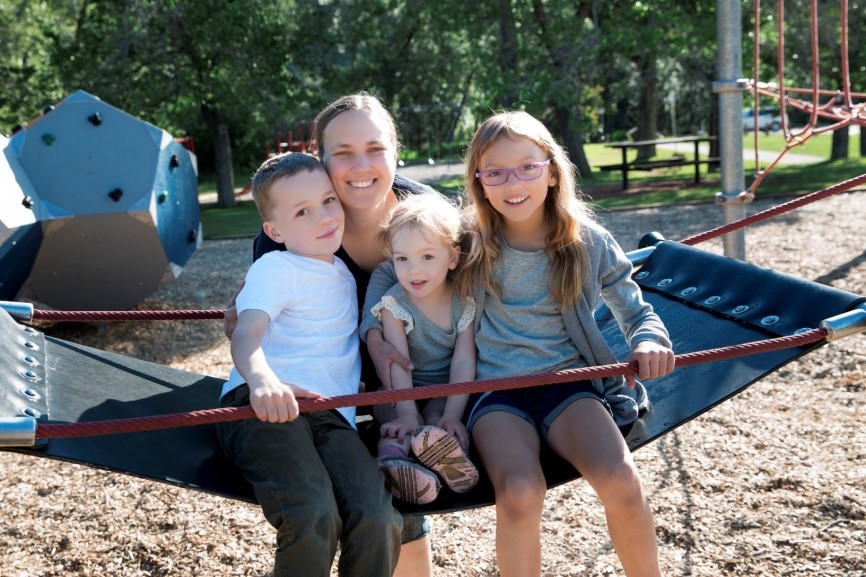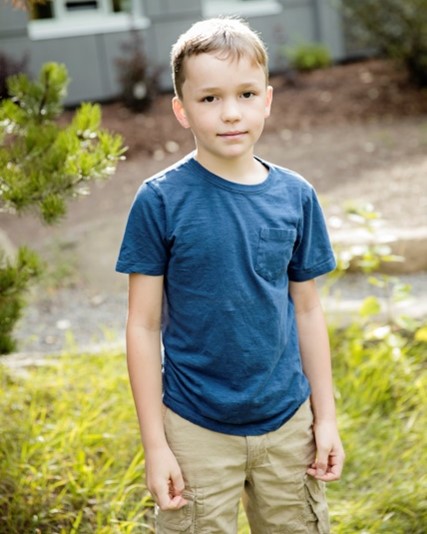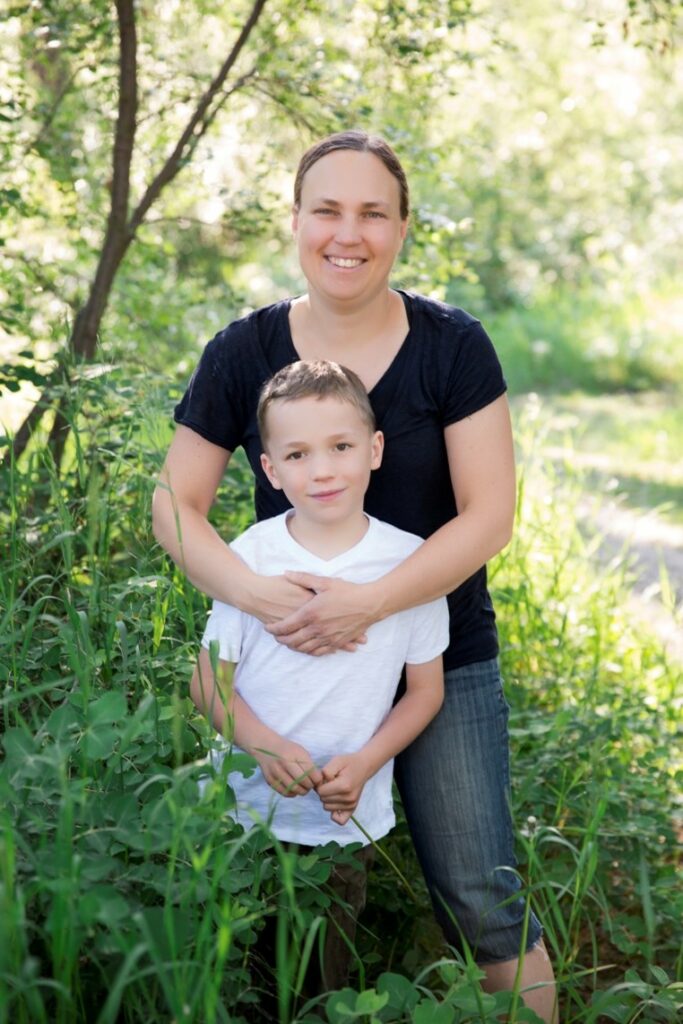Please read below the insights from our wonderful APrON participant, Susan Vukadinovic.
Hello, my name is Susan Vukadinovic and my family is one of the thousands that signed up for the APrON Study.

My son, Robby, is part of the APrON cohort. Robby was born on November 9th, 2010, so while today’s event is about celebrating 10 years of the APrON study, in a few days I’m also looking forward to celebrating another important ten-year milestone – Robby’s first double-digit birthday.


Today I would like to share my thoughts about two of the questions that the lead APrON researchers asked the participant panel to answer.
The first question is: What do I think of APrON trying to transition to an intergenerational cohort, which would follow my son Robby and other kids up until they become adults, and then follow their children—my grandchildren?
My answer to this first question is that I think it’s an excellent idea, because I’m curious about the truly long-term health impacts of various early childhood experiences.
Of course as researchers, you’re all familiar with the Tomorrow Project, which started in 2000, around the same time as the APrON study, and is the largest research study undertaken in Alberta. It has enrolled about 50,000 Alberta men and women aged 35 to 69 to track their health over several decades. One thought I have is that there might be some good information to glean if the Tomorrow Project and the APrON study were to join forces and add the APrON group as a younger, continuing cohort for the Tomorrow Project.
The second question I am going to address is: What would I like to see APrON take on next? There’s so much I’m curious about. For example:
- How is puberty affecting the APrON kids?
- How is their mental health?
- How much time are they spending outdoors?
- How much time are they spending on screens?
- What is their added sugar consumption at this age?
I suspect, though, that these are areas that APrON is already planning to study, so let me tell you a bit more about two areas that may not be on your radar right now.
One area I wonder about, as a parent, is around the long-term effects of sleep training. To give you some personal context about where I’m coming from: I sleep trained all three of my kids, using a classic, old-fashioned, cold-turkey, cry-it-out method – my first child at age two months, the second at age six months, and, the third, again, at two months of age.
I am aware that in certain circles, the consensus is that only a heartless pariah would choose to maximize everyone’s sleep through a cry-it-out method, but all three of my kids seem fine. They don’t exhibit any signs of an underlying mental health illness. They also don’t exhibit any signs of a mental health injury caused by external, environmental factors. They all seem like typically developing kids and my suspicion is that I’m not the only parent who hasn’t seen permanent harm arise from sleep training.
And yet, from my understanding, the jury is still out about the safety of sleep training, from a clinical standpoint. Neither the Canadian Paediatric Society nor the American Academy of Pediatrics have issued a position statement on sleep training, as far as I know, nor do they recommend a specific age to do it.
There is also no data on what proportion of Canadian parents sleep train, even though it’s a common topic that comes up from exhausted parents. As a result, cry-it-out sleep training has turned into a secret, underground activity. As a parent panelist, here’s how I’ve seen it from the trenches: Many parents do it, but few are willing to admit to it, for fear of social opprobrium.
Given how much of an enduring debate this is for exhausted parents, I’m surprised that we still don’t definitively know whether sleep training is perfectly safe, for those parents who choose to do it, or whether it is perilously risky.
Is it okay or is it unacceptable?
Critics of cry-it-out methods will often point to a 2011 Early Human Development study that noted elevated cortisol, or stress hormones, for some period after sleep training has been successfully completed. Whenever there’s a debate about the safety of sleep training, critics hold up this article as the ‘mic drop’ study. Boom! There you go, sleep training is dangerous.
But my gut feeling is that it isn’t dangerous, and I would love for APrON to weigh in on the debate with some data.
So, here are some of the questions that I think would be interesting to study on this particular topic:
- Looking back, how many parents in the APrON study sleep trained and how many did not?
- Do parents remember how old their babies were when they sleep trained?
- Of those parents who recall sleep training their babies, did they use a cold-turkey cry-it-out method, a gradual or check-and-console cry-it-out method, or some other broadly-categorized version of sleep training?
- At age ten, what are the cortisol levels of the children who were sleep trained versus the children who were not sleep trained?
- At age ten, is there a difference in exhibiting signs of either an underlying mental health illness or an externally-caused mental health injury in the kids who were sleep trained? In other words, is there any noticeable long-term effect from sleep training?
There is a lot of fear-mongering out there, yet I wonder how much of that fear-mongering is based on science that holds up under deeper scrutiny. Perhaps, one day, research from the APrON study could even lead to an actual position statement from the Canadian Paediatric Society on sleep training. This would be immensely helpful for parents.
I also have a second idea about what APrON could take on next.
The second issue I wonder about is the unsupervised roaming distance that APrON kids have at age 10. To give you some personal context, my family lives in Marda Loop and this past summer my nine-year-old son, Robby, was allowed to roam with friends as far as the bike pump park on the south side of the Glenmore Reservoir, which is about 10 km away. There was a time when this sort of roaming distance was the norm, but now it’s becoming exceptional, and I’d like to learn more about this trend.
Here are some of the questions that I think would be interesting to study on this particular topic:
- How far are APrON kids allowed to roam from their homes at age 10?
- At age 10, what proportion of APrON kids walk, bike or bus to school on their own, at least some of the time, and what proportion are always accompanied by a parent or guardian?
- How old was your APrON kid when he or she was first allowed to go to the nearest playground on his or her own?
- How often do other kids in the neighbourhood knock on your door and ask your ten-year-old APrON kid to play?
- How often does your APrON kid knock on someone else’s door?
- How old was your APrON kid when you started leaving him or her home alone? For how long?
- Is there a correlation between permitted roaming distance and any other health outcome being studied through the APrON questionnaires? Is there a correlation with responses about resiliency, ability to handle adverse situations, self-esteem, confidence, a sense of responsibility?
- How did the COVID summer impact permitted roaming distance for your child?
I have a vested interest in this topic because when I send my three kids out there to play, there’s safety in numbers. My kids are safer out there when other people’s children are out there, too. Yet as far as I know, neither the Canadian Paediatric Society nor the American Academy of Pediatrics have issued a position statement that gives guidance or encouragement to parents around what age kids can play outside unsupervised.
Again, perhaps, one day, research from the APrON study could lead to an actual position statement from the Canadian Paediatric Society on unsupervised outdoor play. This would be immensely helpful for kids and parents.

Susan Vukadinovic
Twitter: @SusanVuka
Click here for
Susan’s e-mail
Recently published piece in the Globe and Mail: “The seven little words I’ve waited my whole motherhood to say!”

